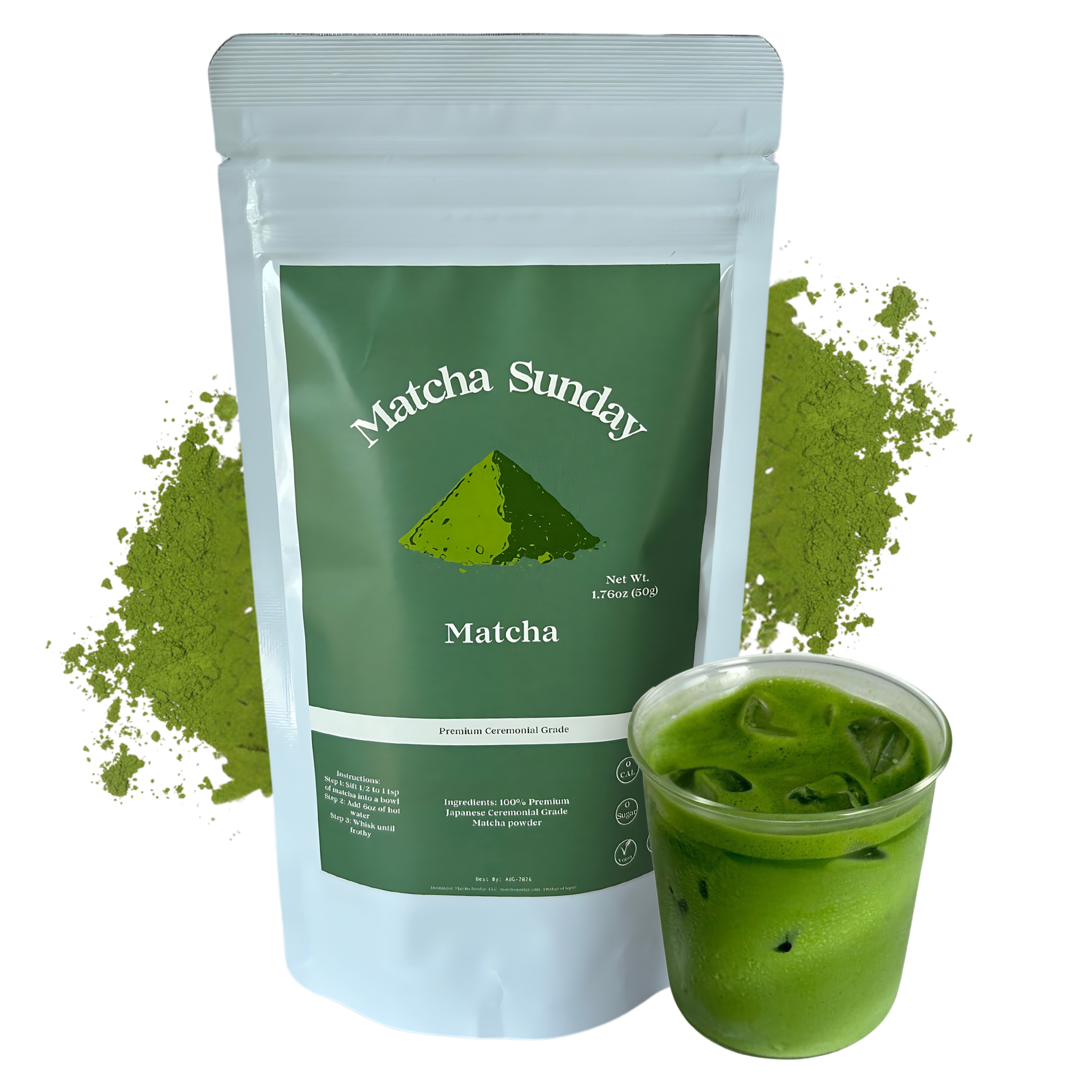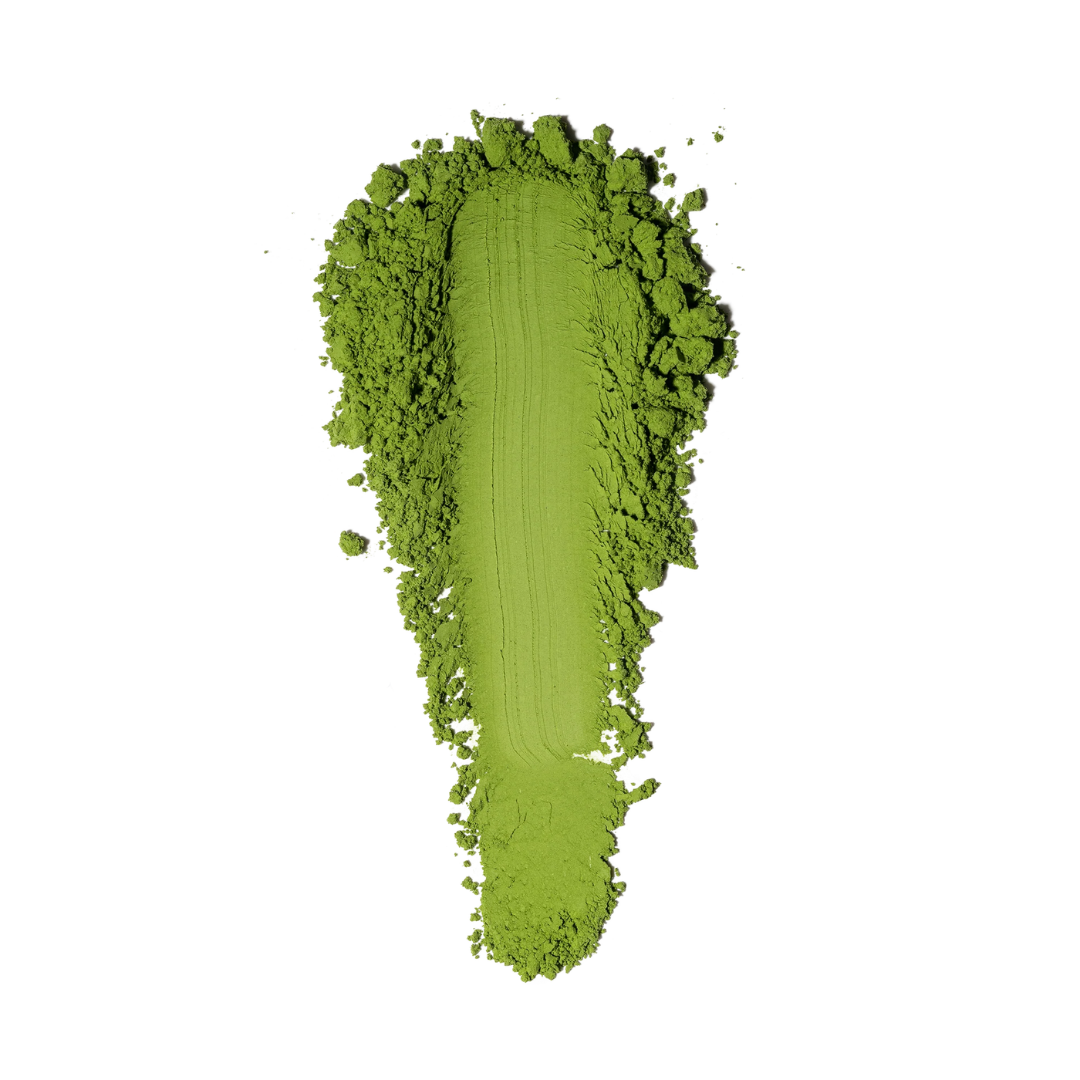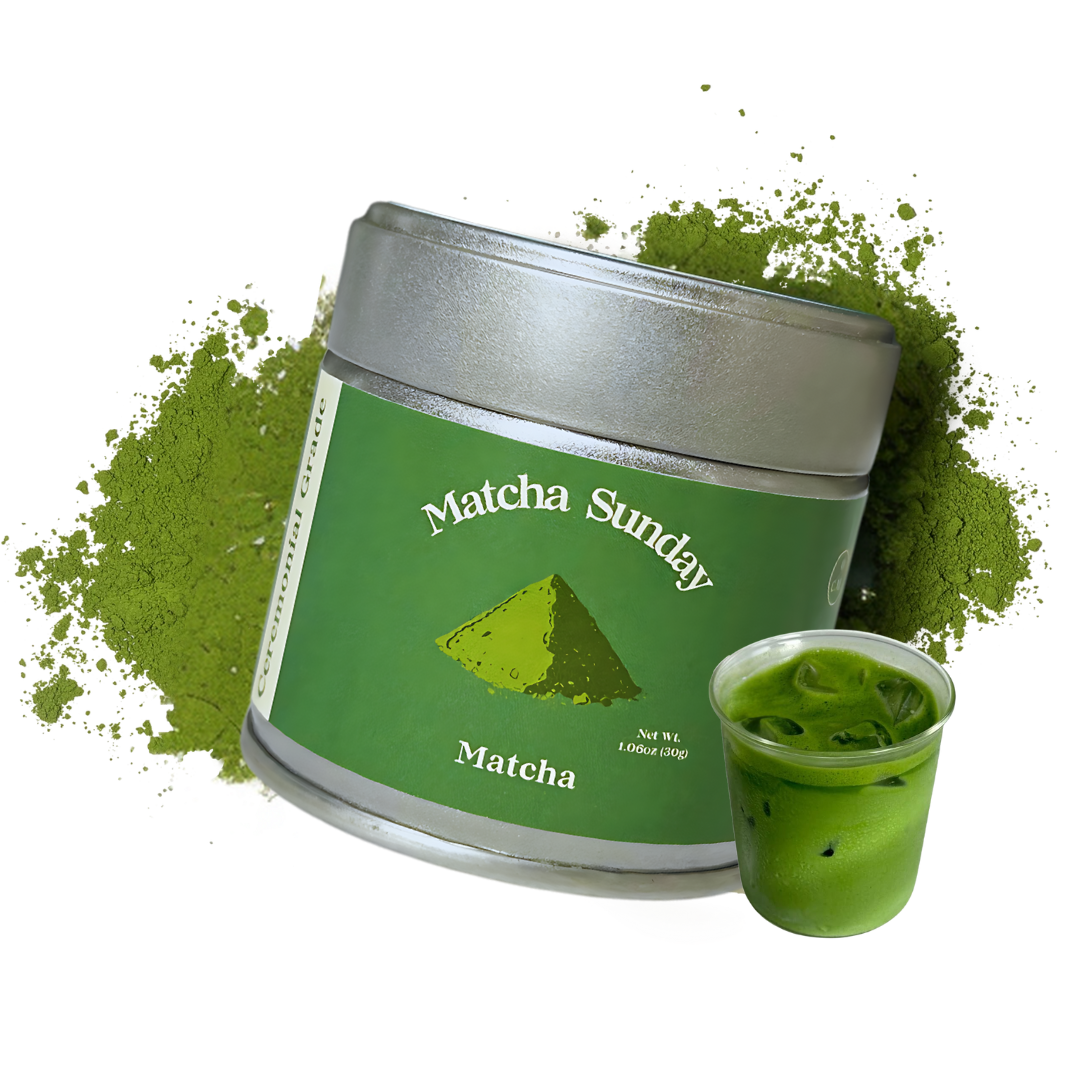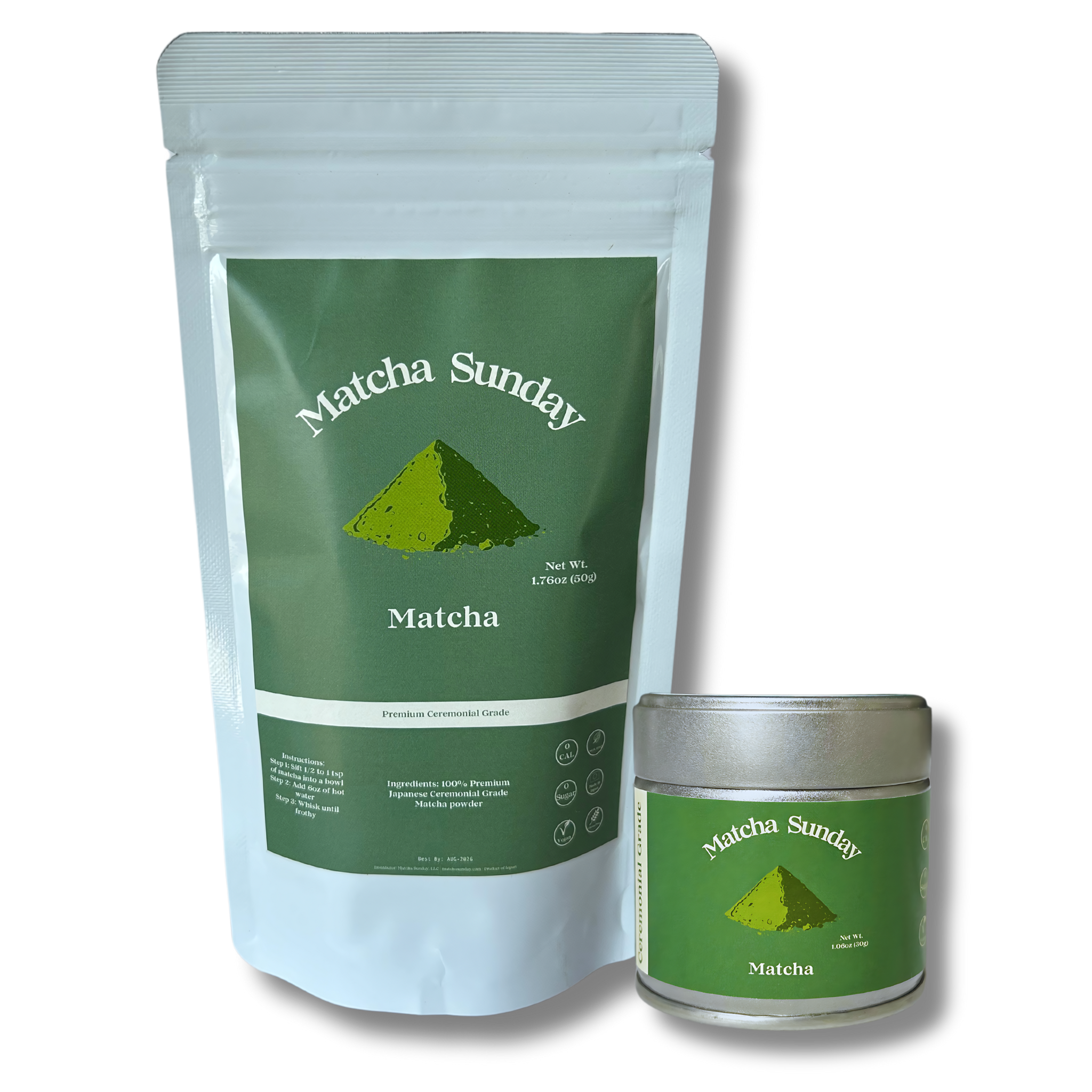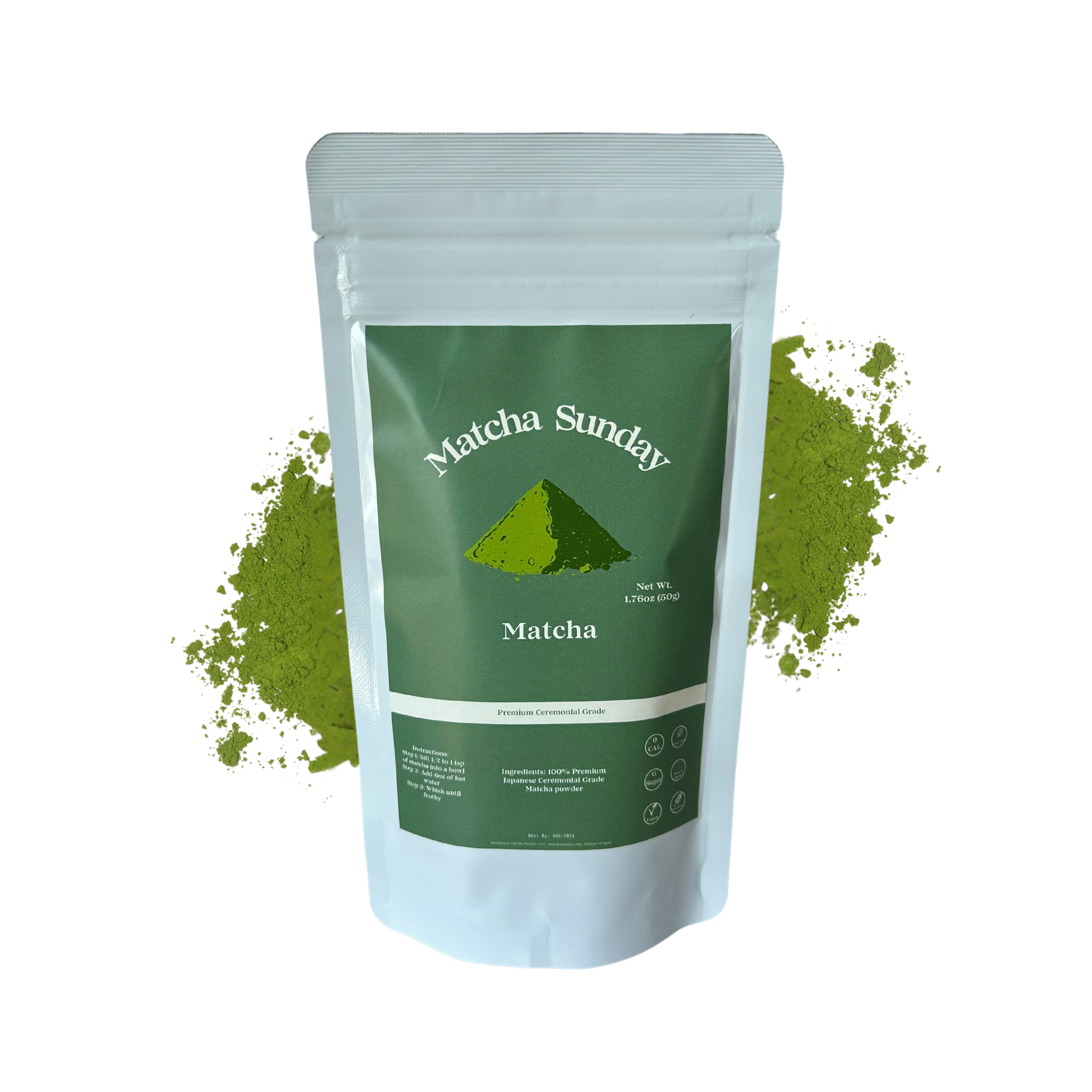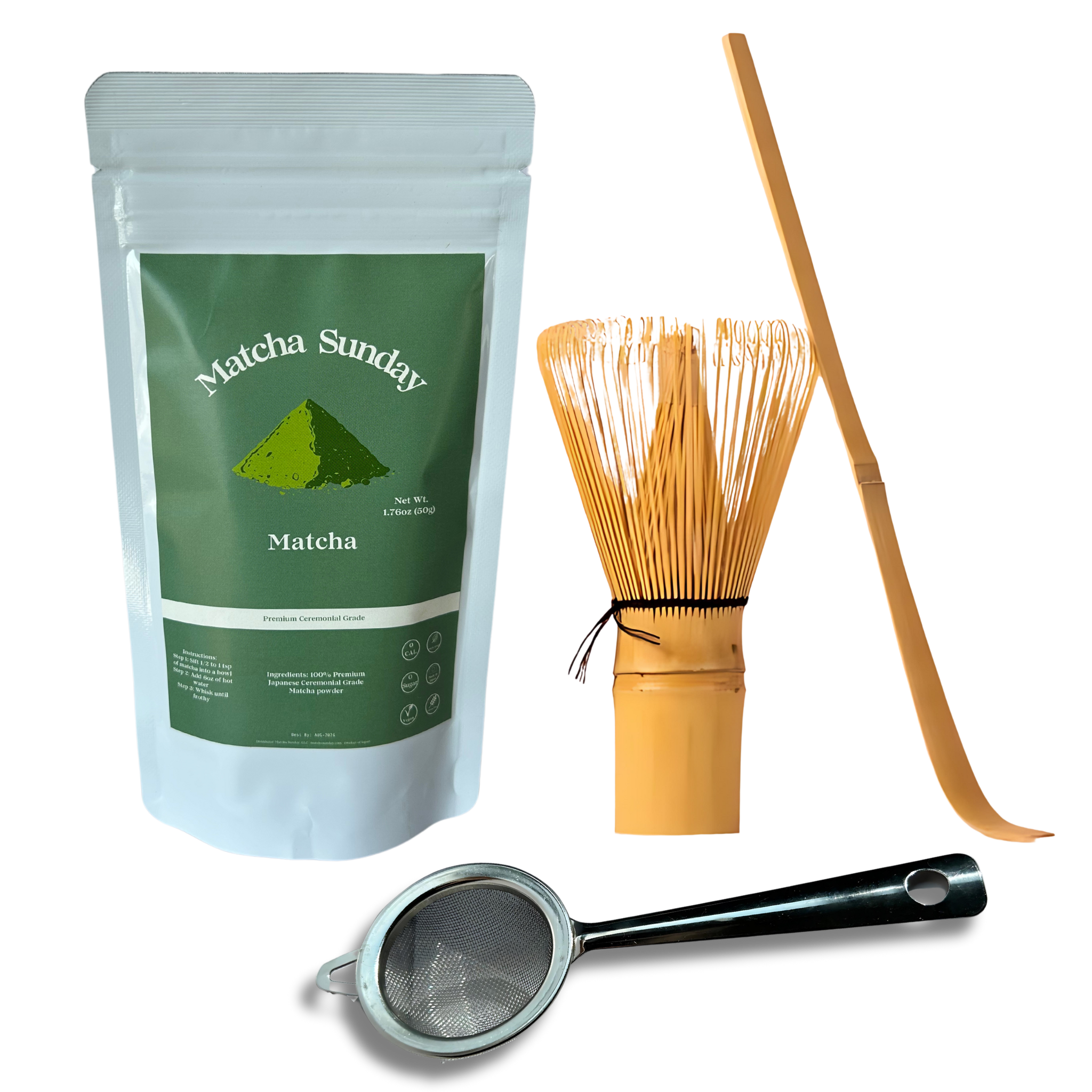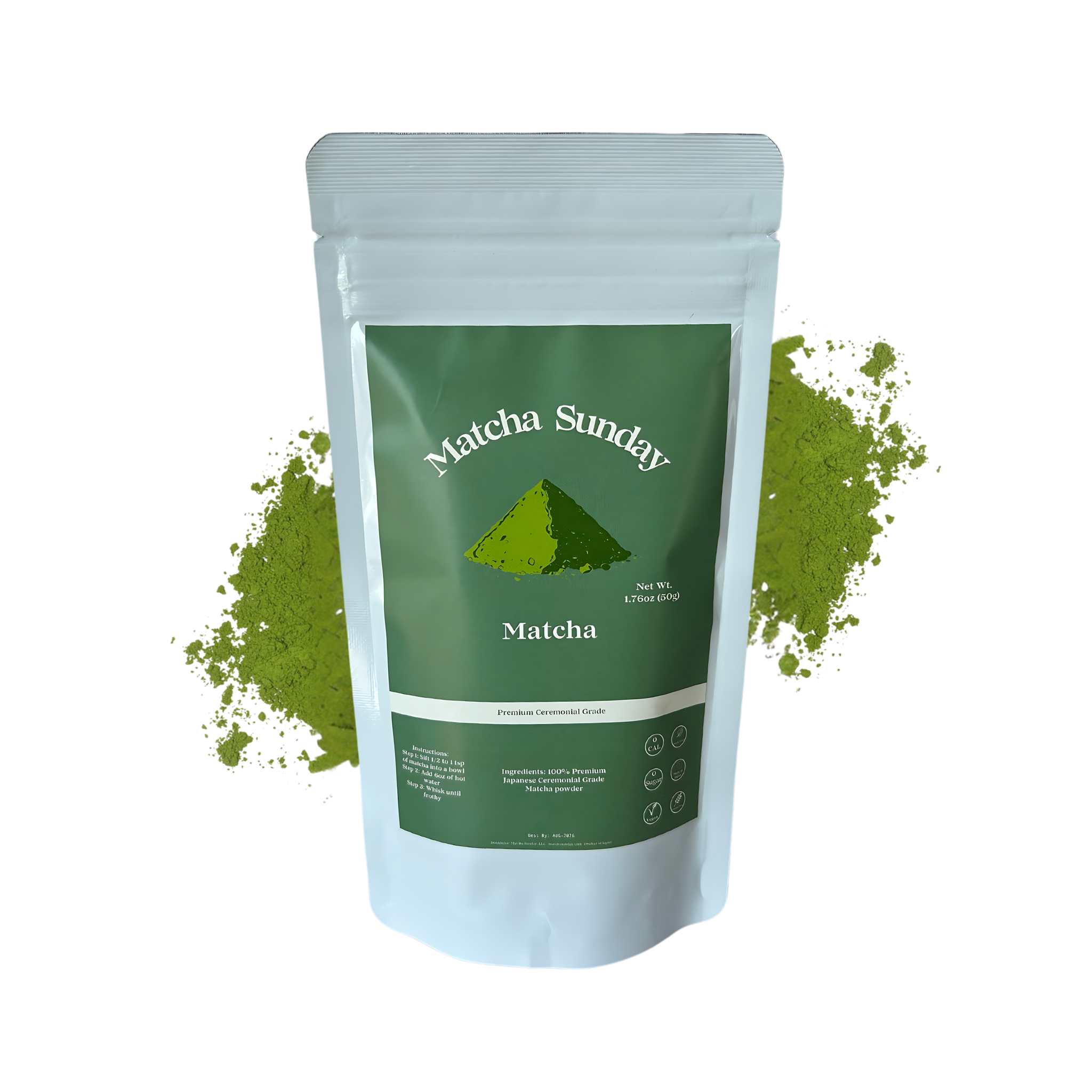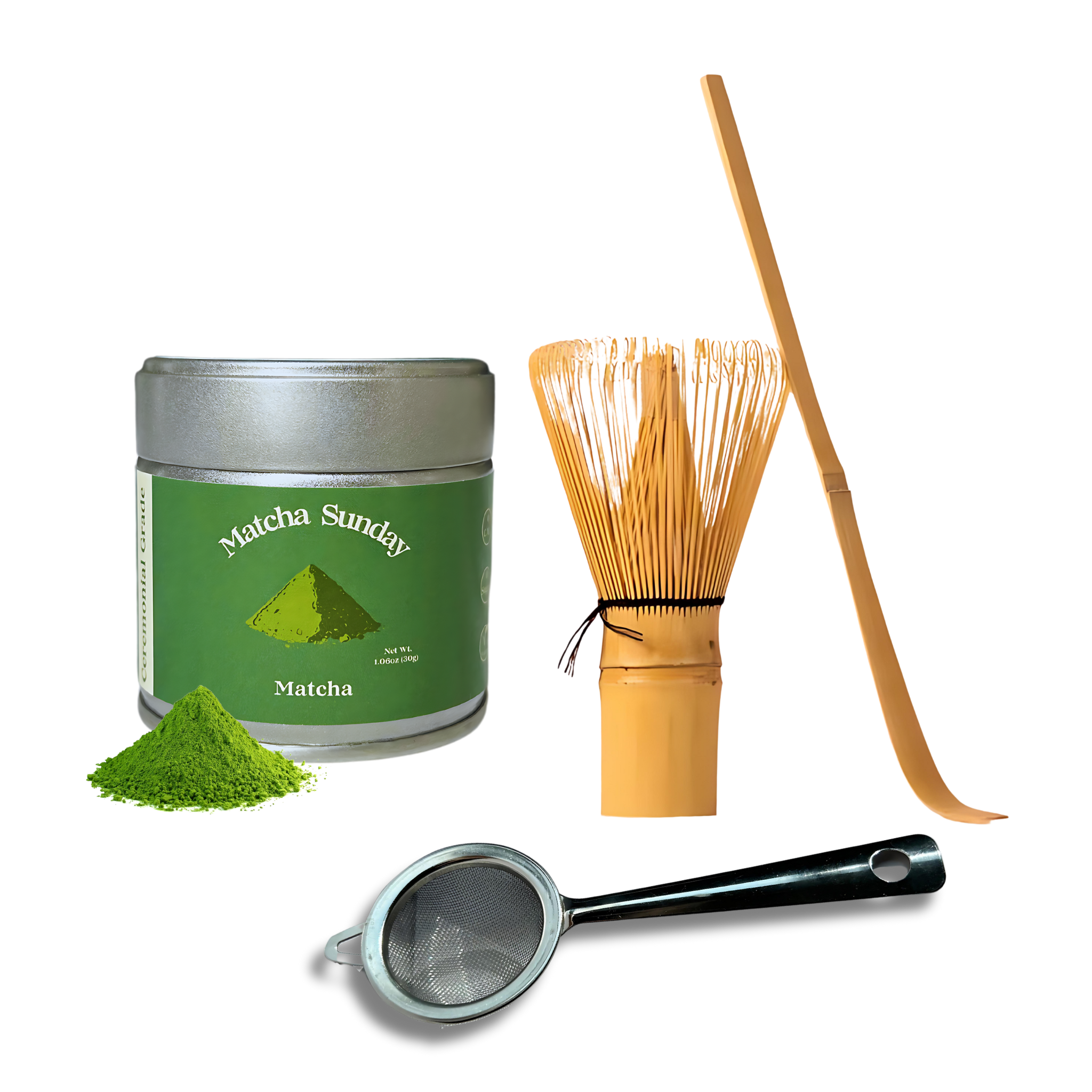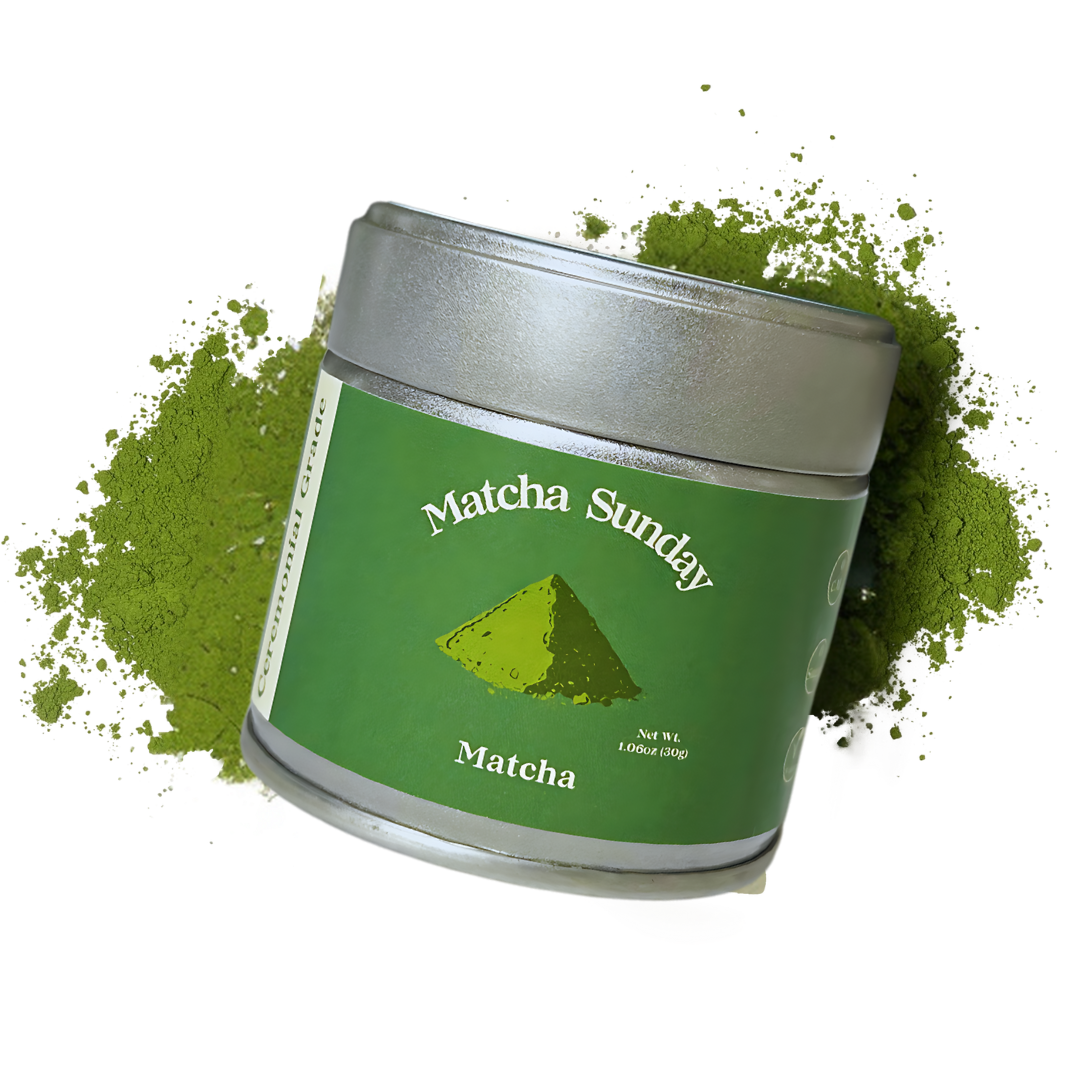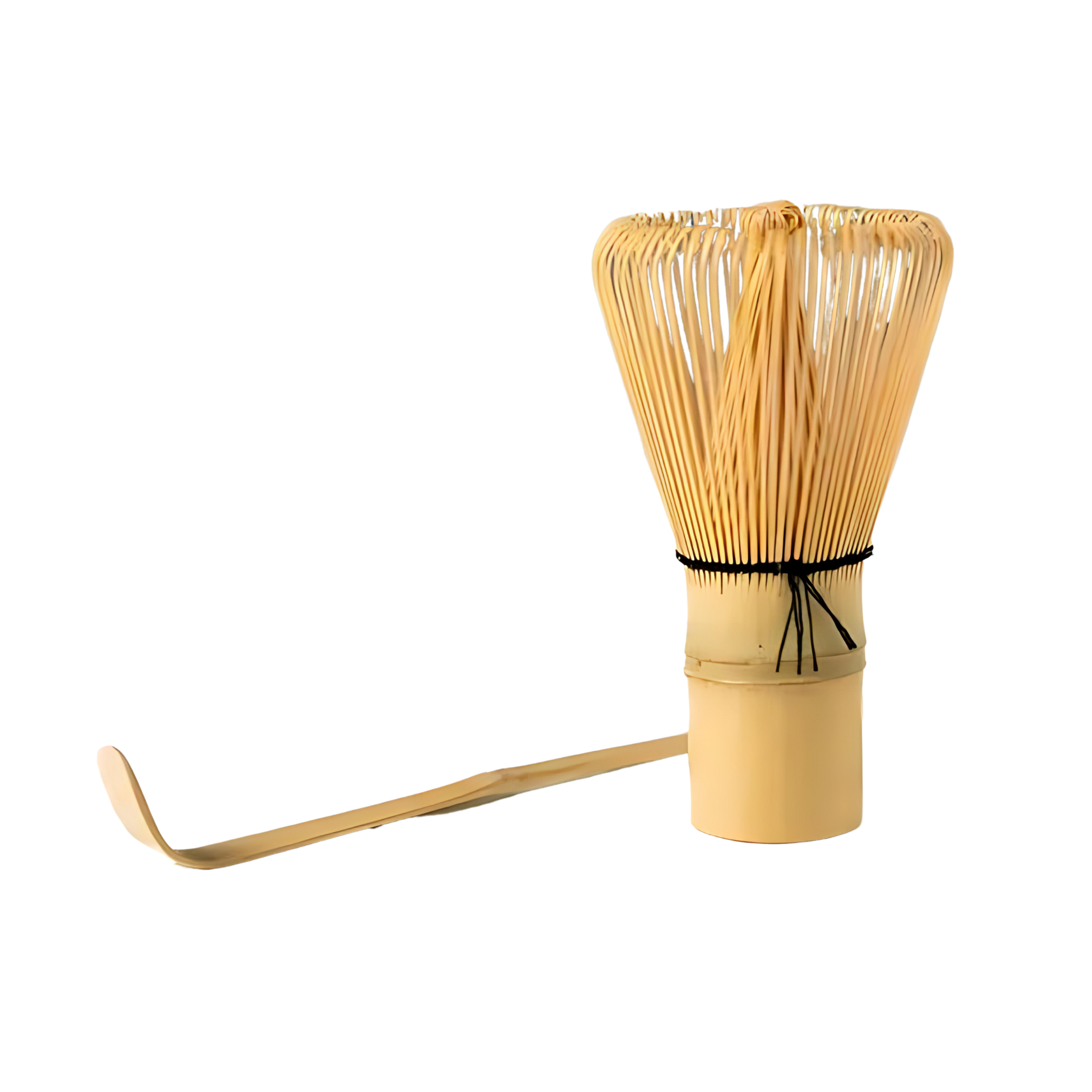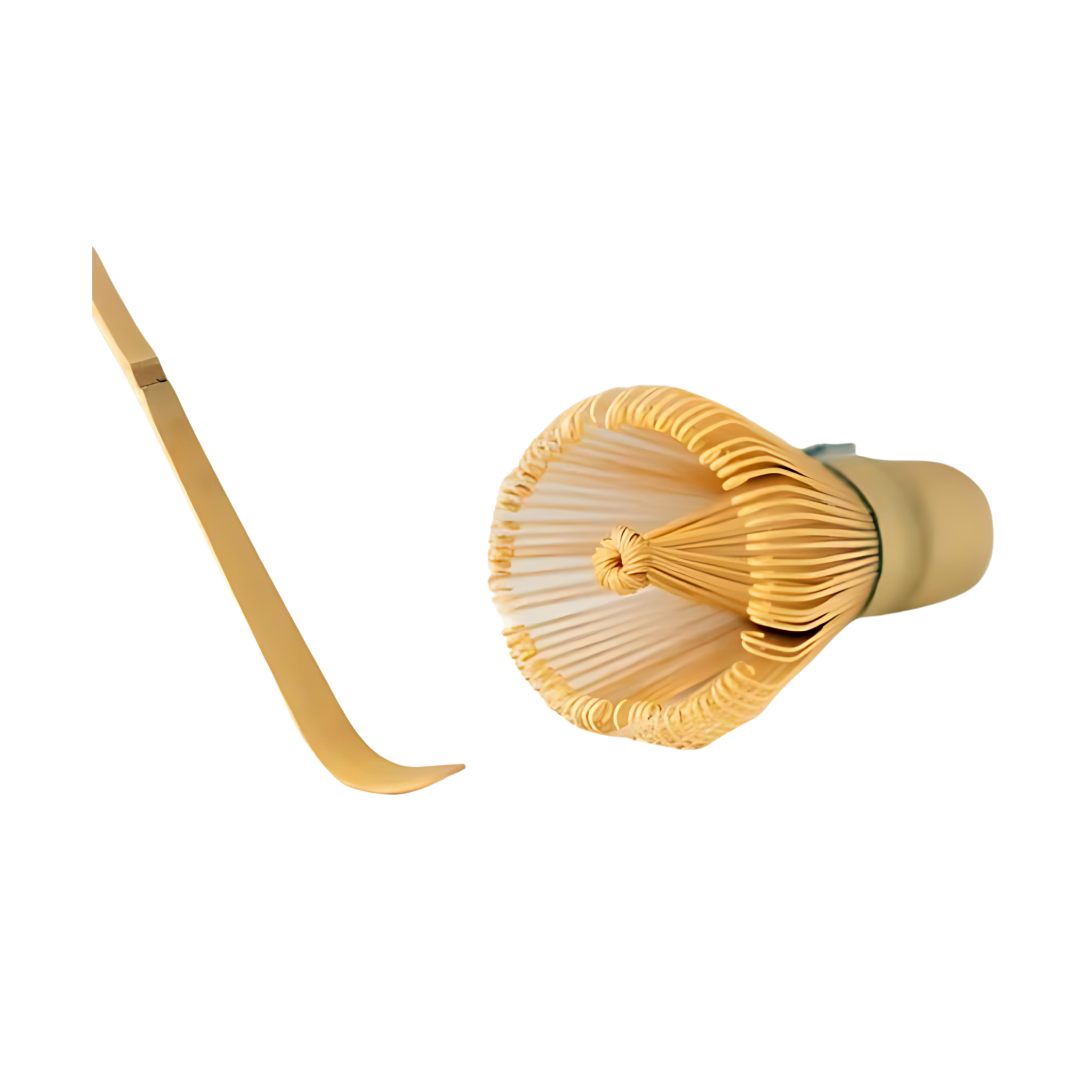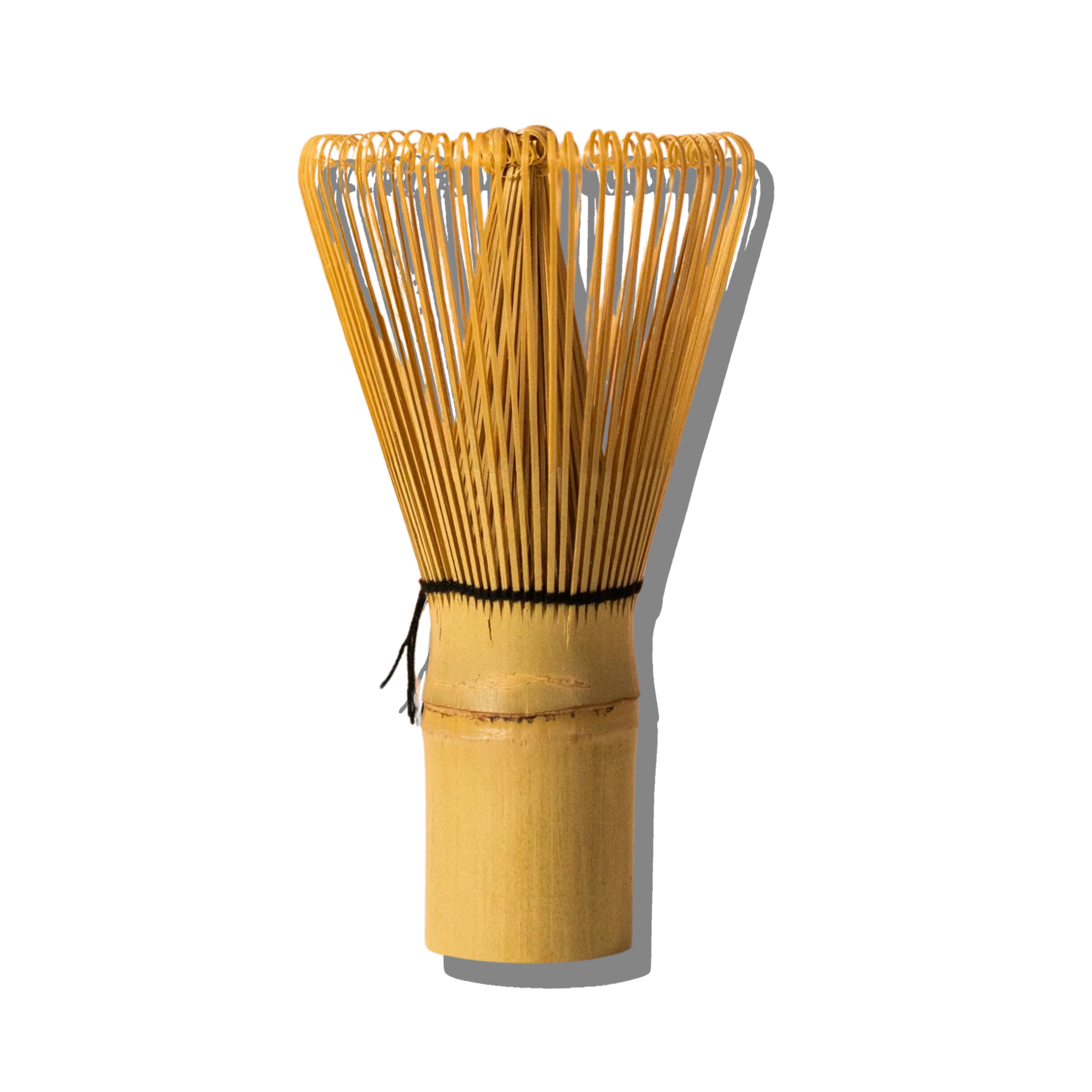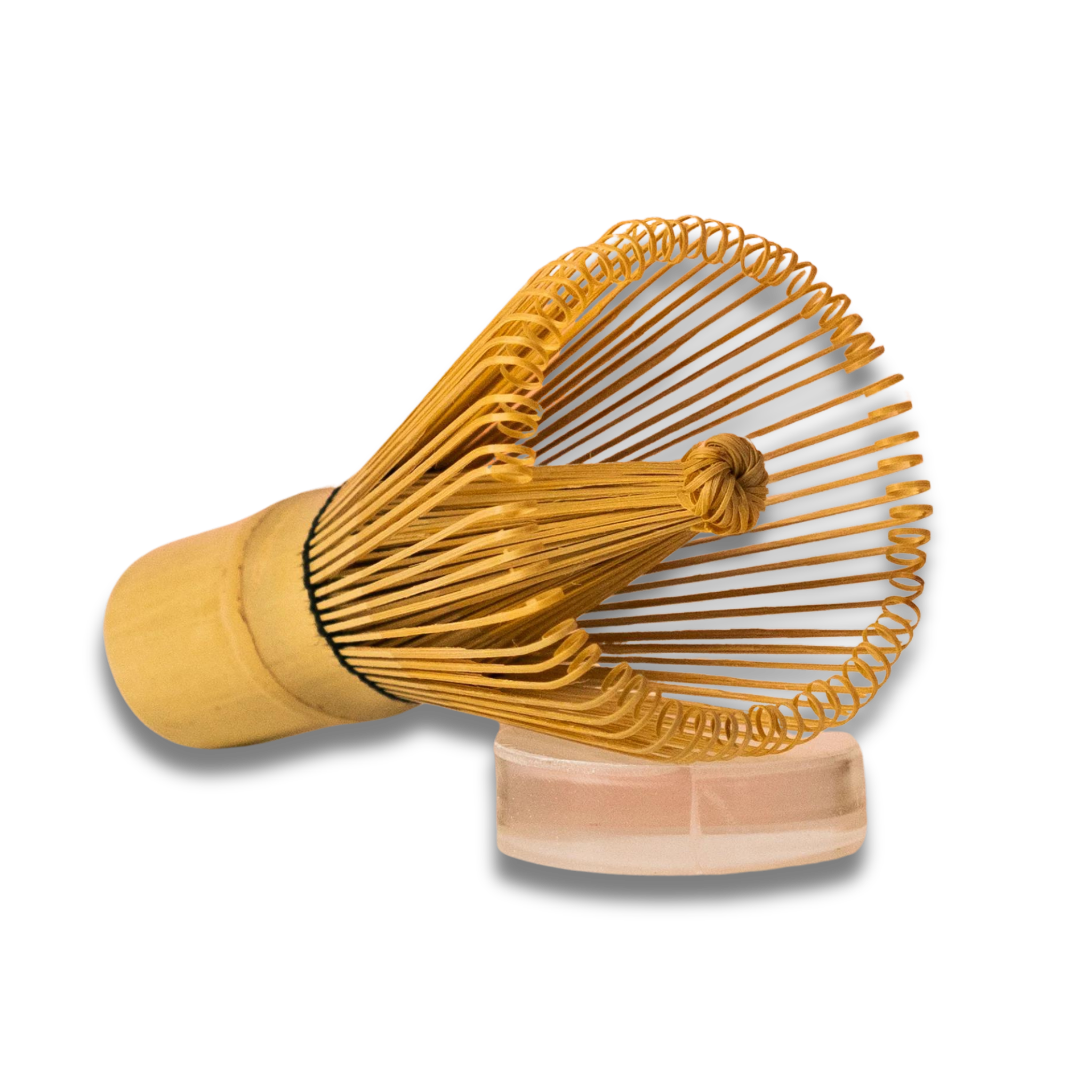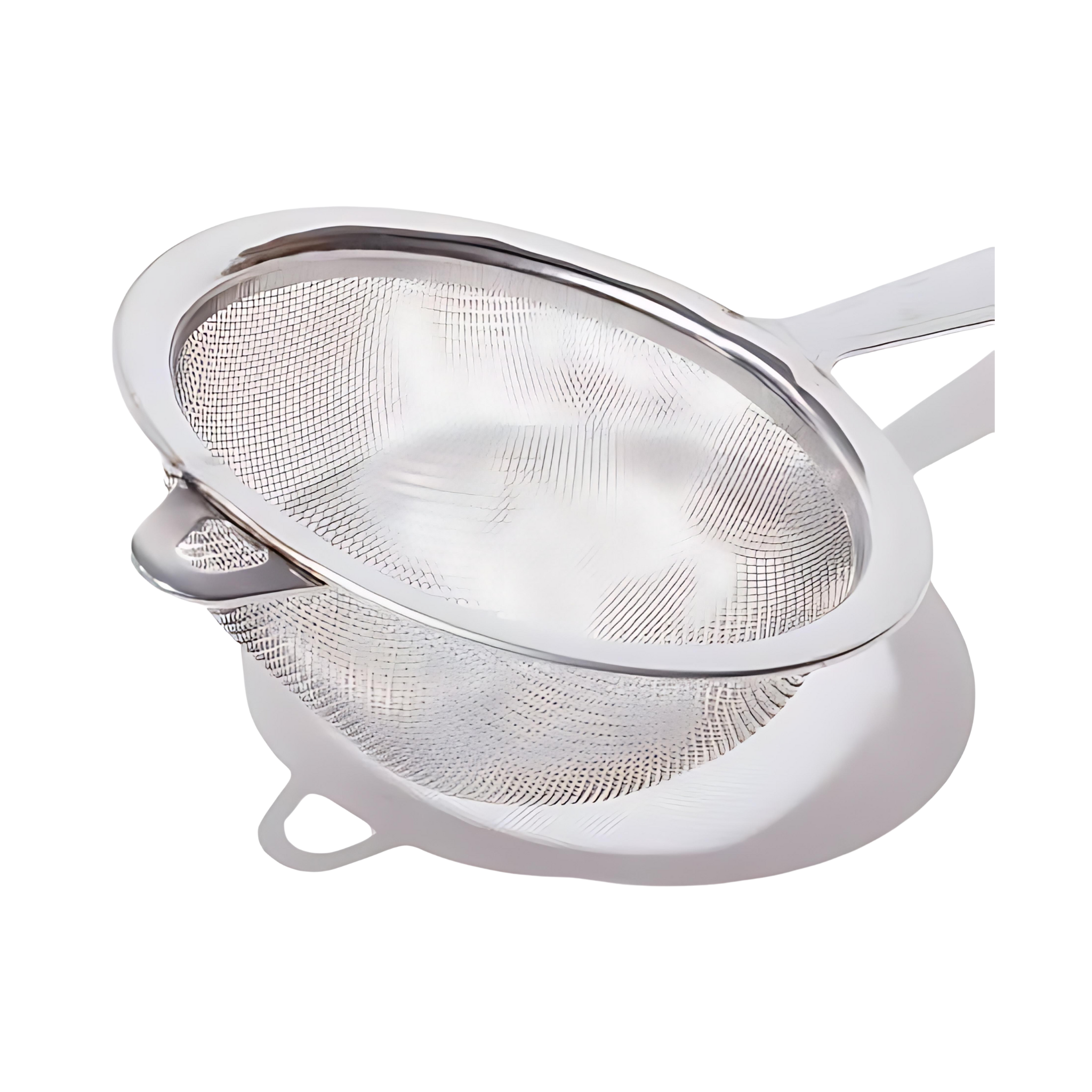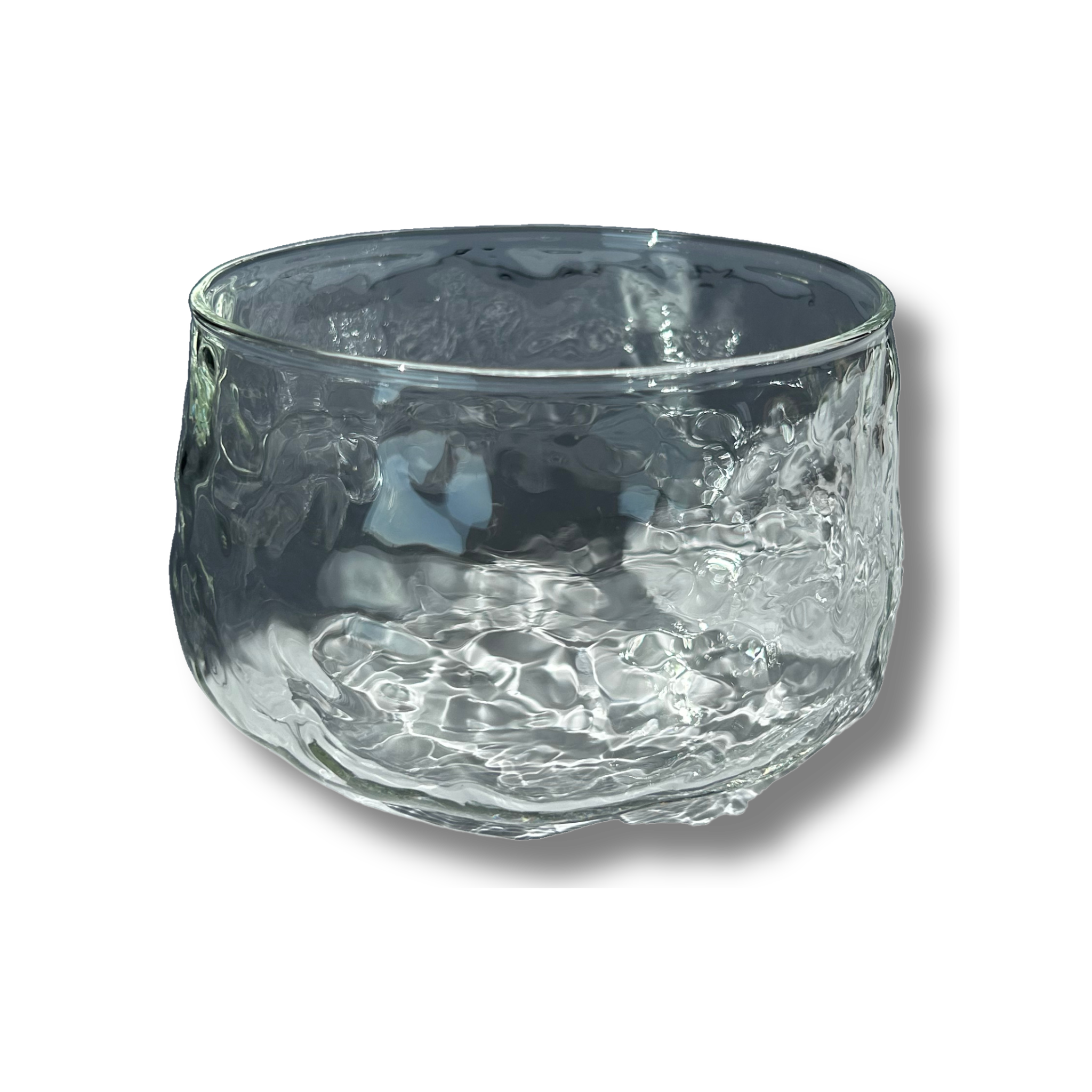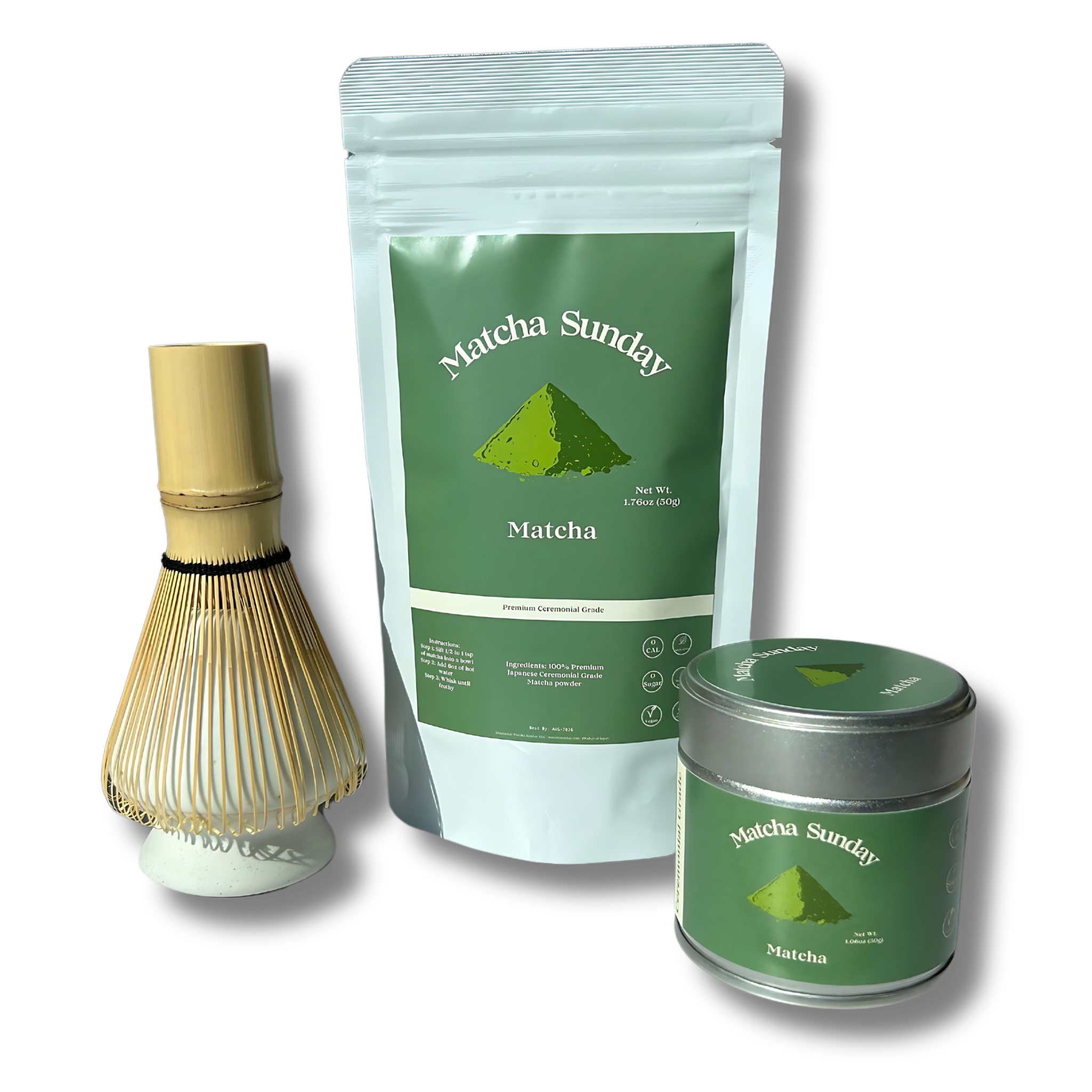The first sip should feel like silk. Cool, jade-green, and quietly exhilarating. Yet too often, iced matcha turns chalky or clumpy and steals the magic. This guide brings back the smooth, luminous pour your ritual deserves.
Why Your Iced Matcha Deserves Better
Your daily cup is a mood-setter. Texture shapes the experience as much as taste. When matcha disperses seamlessly, the aroma blooms and the sweetness glows. The result is focus-forward energy without the grit.
A clump-free pour also looks stunning. Green ribbons spin through milk like modern art. It’s café elegance, at home, on a slow morning or a sunlit afternoon. Precision turns a simple drink into ritual.
The Science of Clumps
Matcha is finely stone-milled tea leaves. Each particle carries natural oils and is feather-light. Dry powder resists quick hydration, so water beads and traps tiny clumps. Static from tins or scoops can worsen the cling.
Humidity adds another twist. Powder absorbs moisture and forms micro-lumps before it even meets water. That’s why sifting, blooming, and proper storage change everything. Understanding the why helps you fix the how.
Why Grade and Grind Matter
Ceremonial grade matcha is milled slower, often from first-harvest leaves. Particles run finer and sweeter, with buttery texture and soft umami. That fineness disperses more easily in water, especially when cold.
Culinary grade has a larger grind and a brighter, more assertive flavor. It shines in baking or smoothies but needs extra care to dissolve in iced drinks. For lattes, ceremonial or a high-quality latte blend is worth it.
Choose the Right Tools
A few thoughtful tools bring reliable smoothness. A fine-mesh sieve breaks up static-bound clumps instantly. A bamboo whisk (chasen) creates a vortex that suspends particles evenly. And a shaker bottle, jar, or handheld frother offers speed when you’re rushing.
Water quality also plays a role. Softer water makes flavors rounder and texture silkier. Harder water can bring slight chalkiness, so filtered water often tastes clearer. Start with great ingredients, then let technique do the rest.
The Cold Bloom Method
Cold water behaves differently. Proteins and amino acids release gently at lower temperatures. Bitterness stays tucked away, and sweetness steps forward. Blooming the powder with a splash of cool water solves clumps before ice or milk enters the scene.
This method respects the tea. Color stays vivid, like polished jade in glass. Aroma rises softly instead of shouting. Your latte becomes a clean, cooling exhale.
How to Make a Clump-Free Iced Matcha Latte
1. Sift 1 to 2 teaspoons ceremonial grade matcha into a bowl or jar.
2. Add 2 to 3 tablespoons cool filtered water, not hot. Think spring-cold.
3. Whisk rapidly in a zigzag motion for 15 to 20 seconds, until frothy.
4. Add 4 to 6 ounces cold water or chilled milk, and whisk or shake again.
5. Fill a glass with fresh ice. Pour the matcha over, then top with milk as desired.
6. Sweeten to taste, stirring gently to keep the sheen.
Quick Tips
A zigzag whisk motion incorporates air and suspends particles evenly. Small, quick strokes matter more than force. If using a frother, work near the surface to create airy microbubbles, then dip deeper to combine.
Shake methods work too. Jar, shaker, or bottle—just add a stainless ball or a clean whisk head. Seal and shake briskly for 20 seconds. The sound becomes a rhythm you’ll love.
Common Mistakes to Avoid
• Skipping the sieve and trusting luck to break powder clumps
• Pouring hot water directly on matcha, then cooling with ice
• Using stale or poorly stored powder that clumps on contact
• Adding ice before dissolving the matcha fully
• Whisking in circles instead of a zigzag to create suspension
• Over-sweetening and masking the tea’s natural sweetness
Water, Temperature, and Texture
Temperature guides extraction. Hot water pulls bitterness and astringency faster. Cold water teases out sweetness, creaminess, and that gentle oceanic aroma. For iced lattes, start cool and stay cool, unless you plan a hot bloom.
If you prefer a warmer bloom, keep it mild—about 70–75°C. Whisk into a thick paste first, then cool with cold milk and ice. You’ll still get a graceful texture without harsh edges.
Milk Matters: Plant-Based Options Compared
Different milks shape body and flavor. Oat milk brings creamy weight and toasted-cookie notes. Almond tastes light and nutty with a thinner mouthfeel. Soy yields classic café foam and balanced sweetness.
Coconut milk adds tropical roundness and lush texture. For barista-style foam, choose “barista” blends formulated for microfoam. If you prefer clean simplicity, unsweetened versions let the tea lead.
Balanced Sweeteners and Flavors
Matcha’s natural sweetness shines with restraint. If sweetening, opt for simple syrups that dissolve cleanly. Maple lends warmth, honey adds floral depth, and date syrup brings caramel edges. Each creates a different mood.
Seasonal accents elevate the cup. A drop of vanilla, a whisper of almond, or a brush of orange peel can sing. Fresh mint, yuzu juice, or a pinch of sea salt offers beautiful contrast. Keep additions minimal, intentional, and clear.
The Shaker Route: Fast and Foolproof
When time is tight, the shaker wins. Sift matcha into a shaker or jar. Add a small splash of cool water and shake hard. Once smooth, add milk and ice and shake again for texture.
This approach is portable and consistent. It also creates a velvety head that looks barista-made. You’ll hear the ice and feel the chill travel through the glass. Efficiency can still be sensual.
Vortex Whisking Done Right
A whisk creates a micro-vortex that suspends particles like snow in winter light. Move the chasen briskly in an M or W motion. Keep the whisk tips barely touching the bowl bottom to avoid splashing.
Aim for small bubbles, not big foamy peaks. You want sheen and soft microfoam. In a glass, those tiny bubbles carry flavor to the surface with every sip.
Sifting: The Two-Second Upgrade
Sifting breaks static and humidity clumps before they spread. Tap the sieve lightly with a chashaku or spoon. Powder should fall like chartreuse snow over a dark forest.
Double-sifting is worth it for ceremonial grade or older tins. First, sift into a small bowl. Then sift again into your whisking bowl. The result is silk.
Storage for Freshness and Color
Light, heat, and oxygen dull the glow and flatten aroma. Keep matcha in an airtight tin, tucked into a cool cupboard. If your kitchen runs warm, store the sealed tin in the fridge, then bring it to room temperature before opening to prevent condensation.
Small tins stay fresher than large containers opened repeatedly. Buy amounts you’ll finish in four to eight weeks. Once opened, treat matcha like fresh produce—precious and vibrant.
Sustainability and Sourcing
Quality begins in the field. Shade-growing increases chlorophyll and amino acids, deepening color and umami. Organic farms can reduce pesticide exposure, though flavor depends on terroir and craft, not certification alone.
Seek traceability, harvest date, and grinding method. Freshly milled ceremonial grade often feels soft like talc, not gritty. Packaging that protects from light and air reduces waste by preserving potency.
Mindful Ritual, Even on Busy Days
Ritual doesn’t need an hour. It needs attention. Two minutes can become a reset—a breath, a whisk, a pour. Color shifts, and your mind gathers itself.
Design a simple layout: tin, sieve, whisk, glass, and ice. A folded linen towel. Choose a favorite glass with weight and clarity. The details invite presence.
Troubleshooting: Quick Fixes
If clumps form after pouring milk, whisk directly in the glass. A handheld frother rescues texture instantly. Work from the bottom up to pull powder into the swirl.
If your latte tastes thin, increase matcha by half a teaspoon. If it feels chalky, reduce water hardness with filtration, or switch to oat or soy milk for body. Always sift.
When to Replace Your Matcha
Color fades from vibrant jade to muted olive as matcha ages. Aroma becomes dull and grainy. Texture shifts from silky to slightly sandy. These signals say, “Time for a fresh tin.”
If you’ve kept it airtight and cool, ceremonial grade stays beautiful for weeks after opening. For the most vivid iced lattes, use it while it sings, not when it whispers.
Advanced Techniques for Latte Lovers
Try a hybrid bloom. Whisk matcha with a small splash of cool water, then add a tiny amount of warmed milk to create an emulsion. Finish with cold milk and ice. You’ll get spectacular sheen and roundness.
For layered aesthetics, pour matcha slowly over ice, then stream in milk along the glass wall. The contrast looks like hanging silk. Stir gently to unify texture before sipping.
Water Chemistry, Simply Explained
Calcium and magnesium in hard water can bind to compounds in tea. Texture may feel slightly heavy or muddy. A simple carbon filter often smooths the sip and brightens sweetness.
Studies suggest that very soft water can overemphasize sweetness and mute structure. Find your balance. If your iced latte tastes flat, try a different water source and keep everything else the same.
Caffeine, L-Theanine, and Calm Focus
Matcha combines caffeine with L-theanine, an amino acid associated with calm alertness. Studies suggest this pairing supports focused energy without the jittery spike. The effect can feel steady, like runway lights guiding your morning.
Cold preparation tends to extract less bitterness while preserving delicate notes. Antioxidants like EGCG remain present, though extraction varies with grade and temperature. This is not medical advice.
Flavor Pairings That Sing
• Vanilla bean or paste for round, custardy sweetness
• Lime zest or yuzu for bright, citrusy lift
• Ginger syrup for subtle heat and depth
• Sea salt micro-pinch to amplify sweetness
• Toasted rice syrup for a nostalgic genmaicha echo
Iced Matcha, Zero Waste Mindset
Use the last spoonfuls in overnight oats or chia pudding. Blend leftover matcha with frozen banana and oat milk for a quick smoothie. Even the final swirls in your shaker become a refreshing mini-shot over crushed ice.
Wash tools with warm water immediately. The aroma lingers beautifully, but stains set fast. A soft brush keeps your whisk healthy and springy.
Caring for Your Chasen
Soak the whisk tips in warm water for a minute before use. Fibers relax and open. After whisking, rinse gently and shake dry. Store on a whisk stand to preserve shape.
Replace when the tips thin or break, or when springiness fades. A lively whisk makes a lively vortex. It’s a small tool with a big impact.
Iced Matcha for Travel and Office
Pack a small tin, a mini sieve, and a handheld frother. A jar becomes your shaker. Airport water fountains often provide cool filtered water. Ice is easy to find.
For offices, keep a chilled milk carton in the fridge and a jar on your desk. Afternoon slump becomes a smooth, green lift. Your ritual travels lightly.
The Minimalist Method: Two Ingredients
When you want something pure, skip milk. Sift matcha, bloom with cool water, then add more cold water over ice. Sweeten lightly, if at all. The sip tastes like a clear mountain stream of green.
Texture remains paramount. Bloom thoroughly and shake vigorously. You’ll feel the difference on your tongue: no grit, just velvet.
Seasonal Twists and Ice Strategy
Large cubes melt slowly and keep flavors bright. Crushed ice chills quickly but dilutes fast. Choose cubes for leisurely sipping, crushed for a quick cool-down.
In summer, add muddled mint or basil for garden freshness. In winter sun, try a whisper of cinnamon or cardamom. Let the season guide the accent, never the center.
Your Perfect Ratio
Start with 1.5 teaspoons matcha to 6 to 8 ounces milk or water. Adjust by a quarter teaspoon at a time. The sweet spot tastes balanced, with gentle umami and clean finish.
If you crave more body, reduce dilution rather than chasing sweetness. Concentration brings texture and depth. Sweetness can then stay subtle and intentional.
Step-By-Step: Shaker Latte in 30 Seconds
1. Sift matcha into a shaker with 2 tablespoons cool water.
2. Shake hard for 10 seconds until smooth and glossy.
3. Add ice and 6 ounces milk; shake another 10 seconds.
4. Pour into a glass, taste, and adjust sweetness.
5. Enjoy the silk.
Taste Training: Calibrate Your Palate
Taste your matcha plain once a week. A few sips tell you how the harvest evolves. The latte will then feel clearer and more expressive. You’ll catch when it’s time to adjust ratios.
Notice aroma first—sweetgrass, nori, white chocolate. Then texture—silky, plush, or lean. Finally, finish—clean, lingering, or quick. Your palate is your compass.
For Hosts and Gatherings
Batch the base. Whisk a concentrated matcha with cool water and store chilled for a few hours. Guests add their milk and ice to customize sweetness. The bar looks stunning in green.
Offer a trio of milks and a small board of citrus peels and herbs. Keep it minimal, artful, and easy. Good design makes hospitality effortless.
When to Use Hot Bloom for Iced
Some teas bloom beautifully around 70–75°C. If your matcha tastes stubbornly thin, whisk a warm paste first. Then cool with cold milk and ice. The warmth helps emulsify oils and boosts mouthfeel.
Avoid boiling water. High heat shouts over nuance and pulls bitterness. Think gentle sunrise, not noon glare.
Matcha and Mindset
This drink is a reset button disguised as a treat. Ice clinks, whisk hums, color blooms. You come back to yourself for a moment. Calm energy follows.
Let your ritual be brief but intentional. The quality of attention becomes the flavor you remember. Every detail, quietly considered.
Key Takeaways
• Sift, bloom with cool water, then add milk and ice for silk-smooth texture
• Use ceremonial grade or a quality latte blend for effortless dispersion
• A bamboo whisk or shaker is your fast path to clump-free bliss
• Water quality and temperature shape flavor and mouthfeel—start cool and filtered
• Store matcha airtight, away from light and heat, and use it fresh
• Keep sweeteners minimal; let green sweetness lead the cup
If you’re ready to elevate your ritual, reach for a fresh tin of Matcha Sunday Ceremonial Grade and a well-made Bamboo Whisk. Your iced latte will pour luminous and taste composed, every time. Smooth, focused, and beautifully green—like a breath you can sip.


